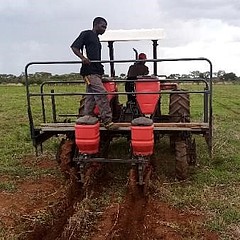 PhD Research Project: Utilizing sustainable agricultural mechanization to unlock the potential of conservation agriculture in Zambia
PhD Research Project: Utilizing sustainable agricultural mechanization to unlock the potential of conservation agriculture in Zambia
Conservation Agriculture (CA), which aims to build more healthy soils, may help farmers to raise agricultural productivity and adapt to climate change. However, its adoption has remained low across Africa. This has been attributed to the high labor-intensity of CA when practiced without mechanization. Thus, focusing on Zambia, the project explores the opportunities and challenges of locally adapted, mechanized CA.
The research centers on an on-farm experiment comparing different types of mechanized CA, explores perceptions of emergent farmers on mechanized CA, and studies discourses on CA among a spectrum of stakeholders such as farmers and policymakers.